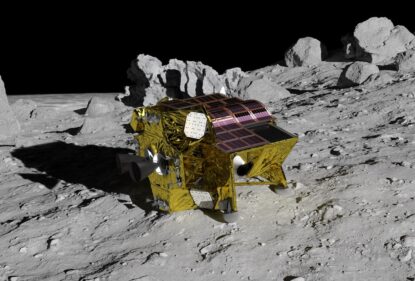Ancient people wearing animal skins laid the foundations for the expansion of mankind. Instead of spending millions of years on evolutionary changes of the organism, adapting to the environment, man began to use equipment to survive in an unfavorable environment. The approach turned out to be successful: people were able to dive under water, rise into the air, and in the XX century — go into space. And now the spacesuit is probably the most difficult “clothing” for the most dangerous conditions, having already managed to go a long way.
From fantasy to reality
The first spacesuit appeared in science fiction 63 years before man’s flight into space. In 1898, the astronomer, popularizer and writer Garrett Serviss composed, by order of the New York Journal, the continuation of The War of the Worlds by H. G. Wells — “Edison’s Conquest of Mars”. According to the plot, earthlings build spacecraft and strike back at aggressive Martians. And to service these spacecraft in space, a “sealed spacesuit” was required.
Unfortunately, Garrett made several very common mistakes in the description of the spacesuit at once: the design he proposed was based on soft diving suits and did not take into account the real physics of vacuum.
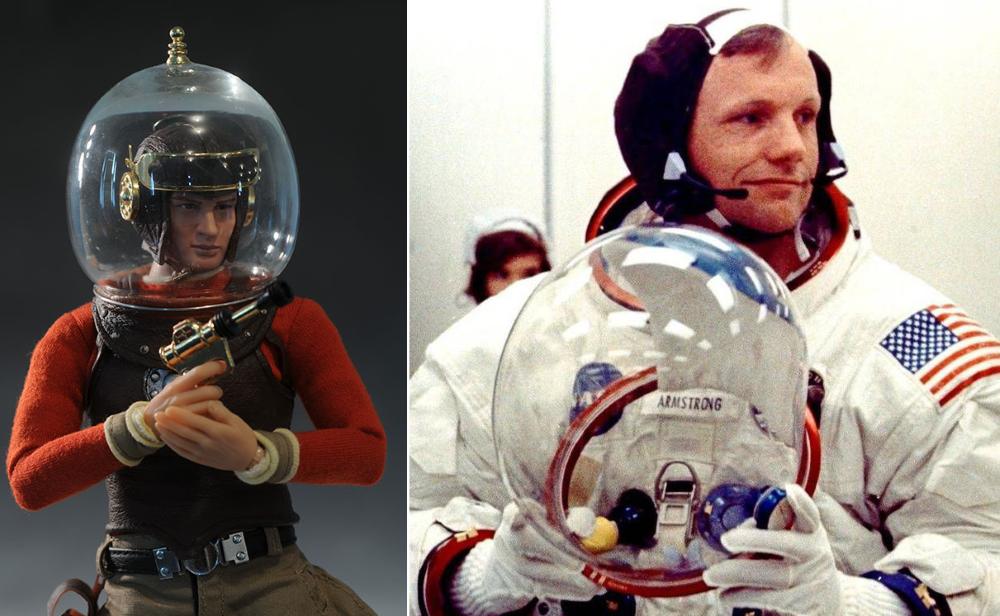
Invented in 1928, the character Buck Rogers (Armageddon 2419 A.D.) also wore a suit that vaguely resembled a diving suit, but it already had the idea of transparent helmets used in the Apollo program spacesuits — their sealed (inner) helmet had only a small layer of fabric on the back of the head. In 1936, the film “Cosmic Voyage” was released on Soviet screens, the consultant of which was Konstantin Tsiolkovsky. But even there, in spacesuits for walking on the Moon, the “descendants” of diving suits were easily guessed.
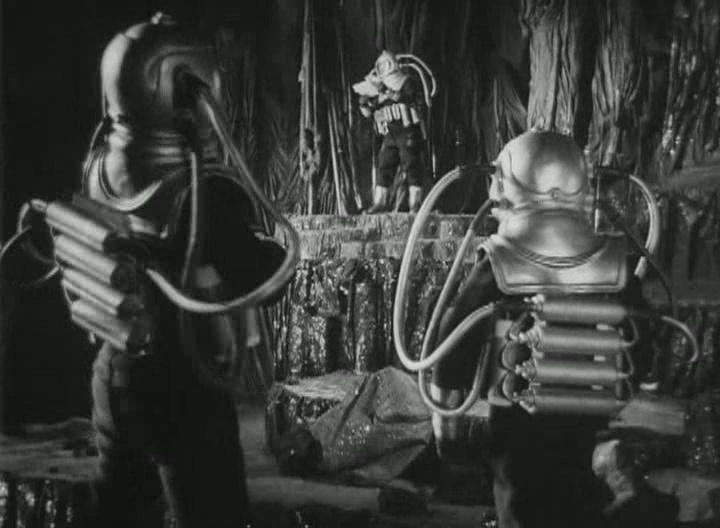
The first realistic description of a spacesuit in science fiction before Gagarin flew was made by Robert Heinlein. In the story “Have Space Suit—Will Travel” (1958), this author, who was then working as an aviation engineer, depicted a structure with hinges that did not inflate in a vacuum, as well as plausible life support and thermoregulation systems.
Underwater and in the air
Historically, spacesuits were created in the following sequence: diving suits, then aviation high-altitude suits, and finally space suits. Mankind learned to work under water at the beginning of the XIX century. Relatively simple technologies — rubber-impregnated fabric and an air pump on the surface — made it possible to create a full-fledged suit for a long and effective stay in the underwater world. With the development, diving suits were even divided into hard and soft, as well as spacesuits. But this is a false analogy: the fact is that pressure increases with increasing depth, a hard diving suit protects against it, but a soft one does not. Space suits, on the other hand, work in an external vacuum, and their similar separation is due to completely different reasons.
Actively developing in the 30s of the last century, aviation stormed all new frontiers. The speed, range and altitude of the flight grew. And it turned out that without additional equipment, problems for pilots began at altitudes of about 4.5 km — a drop in ambient air pressure and a decrease in partial (relative) oxygen pressure led to hypoxia and loss of the ability to control the aircraft. Oxygen masks made it possible to climb higher, but calculations showed that at an altitude of 15 km, the pressure of carbon dioxide released by the lungs would exceed atmospheric pressure and make breathing impossible, and above 19 km, all biological fluids would begin to boil in the body. There was a need for suits that not only supply breathable air, but also provide pressure at which a person can live and work. The idea was obvious to use the experience of divers. Therefore, in the photos of those years, high-altitude suits have the same solid helmet and shirt front.
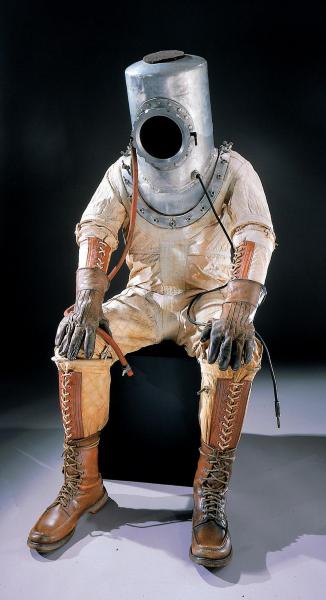
Aviation pioneer Wiley Post in 1935 managed to rise to an altitude of about 15 km in a spacesuit developed with the participation of Russell Colley from Goodrich Company. But the engineers were waiting for a new surprise. The diving suit works in conditions when the external pressure increases with increasing depth. And at altitude it decreases, and the spacesuits begin to inflate. And they had to come up with special hinges of constant volume so that man could simply bend his arm.
The first to do this was in the USSR, where an engineering group led by Yevgeny Yefimovich Chertovsky had been engaged in the development of high-altitude suits since 1931. Two versions turned out to be too imperfect to test them in real conditions, but the third — CH-3 — was tested on a TB-3 bomber, rising 7-10 km in 1937. The work was carried out until 1940, and the new modifications gradually solved the detected problems: for example, in the CH-5 (1938), it was already possible to perform various actions with gloves.
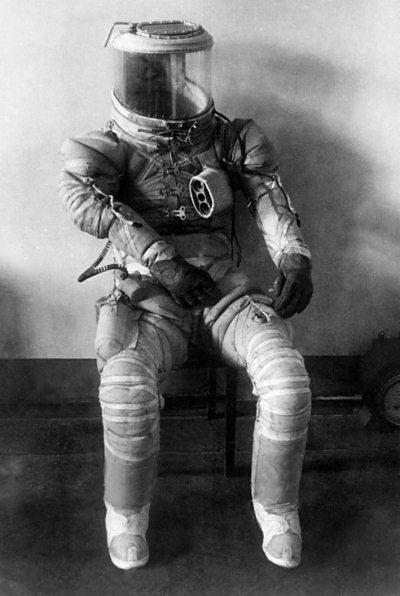
In parallel, since 1937, work on the creation of high-altitude suits was carried out at the Central Aerohydrodynamic Institute (CAHI). One of the models was tested in flight in 1938, according to the results, new versions were developed and even managed to eliminate fogging of the windshield. Experimental high-altitude jumps in a space suit with a parachute were also carried out.
Most likely, it was during this period that the word “spacesuit” began to be used in a broader sense. Formed from Greek roots and literally translated as “man-boat”, at the beginning of the century it referred only to diving suits. They are still called “spacesuits” today, but this word, without clarification, now means rather the astronaut’s attire.
The beginning of the Second World War did not stop the development of spacesuits, but no country achieved great success in this direction at that time.
Born of necessity
Jet aircraft, which appeared at the end of World War II, began to develop very rapidly in the postwar period. The vehicles flew higher and higher, and an unpleasant problem was discovered: the cabin could be made airtight and maintain sufficient pressure in it, but in the event of a sudden depressurization (for example, during an air battle), the pilot had no chance of surviving. It was necessary to develop special suits. On both sides of the ocean, this engineering task was solved simply — tubes connected by ribbons running “eight” were put along the extremities. In case of depressurization, air was supplied to the tubes, they expanded, and the tapes tightened the pilot’s body, on whose head there was a sealed helmet where oxygen was supplied.
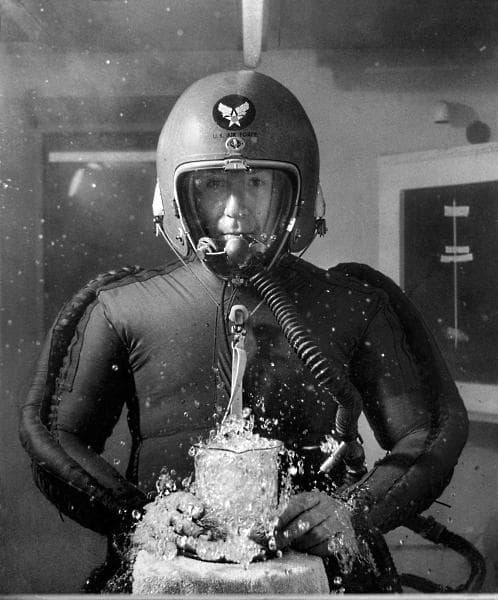
The idea turned out to work, but only in emergency conditions: in general, the sensations were unpleasant, the whole body could not be “compressed” and the risk of sudden loss of consciousness due to a drop in blood pressure remained. A partial solution was inflatable bags, which additionally compressed the body. For example, in the USA, the MC-3 suit was used in aviation for quite a long time and successfully; with minimal changes, it was also used for experimental high-altitude flights on stratostats and jumps from them.
The testers in the pressure chambers could work in conditions of almost complete vacuum. But when even faster and higher-altitude aircraft appeared (X-15 rocket planes and SR-71 reconnaissance aircraft), the pilot’s suit also needed to take on the function of protection from extremely low temperatures and air pressure when ejecting at high speed, which the altitude-compensating suits coped poorly with. Therefore, engineers and pilots had to decide what was best suited for military aviation — a compensating suit or a spacesuit. Although both were used in practice, the spacesuit turned out to be a more successful solution for rocket planes and space.

In the USSR, after the war, the Gromov Flight Research Institute was engaged in these issues, and later — a specially created pilot plant No. 918 (now scientific-production enterprise “Zvezda”). Here, until the end of the 50s, a series of high-altitude spacesuits were developed, including the Vorkuta spacesuit (lead designer Alexander Boyko) for the Su-9 interceptor. It was produced in a small series for aviation, and when the development of a suit for space flights SK-1 began in 1959, it was the Vorkuta that was taken as the base model. Its feature was two layers — power and sealed — instead of one of rubberized fabric in previous versions. This made it possible to use more suitable materials: dacron for the power layer, sponge and sheet rubber for the sealed one.
And in general, Yuri Gagarin in the first historical flight turned out to have as many as eight layers of clothing: underwear, three layers of a heat-protective suit (one of which had a ventilation system installed), a spacesuit lining, a sealed layer, a power layer and an upper orange shell so that the cosmonaut could be more easily noticed after landing. Another feature was the system of automatic slamming of the helmet during depressurization. Within the framework of the Vostok program, a spacesuit for female cosmonauts was also created, taking into account the peculiarities of female anatomy.
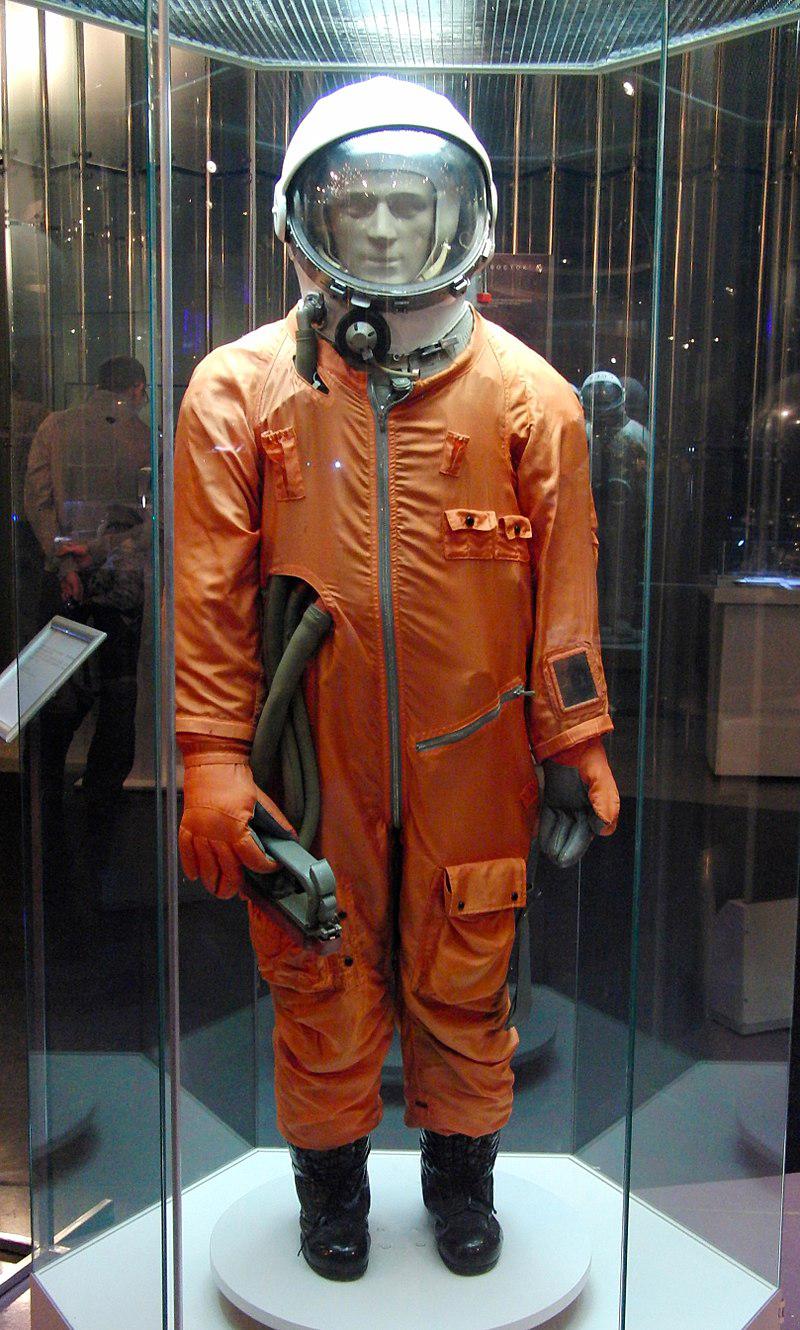
In the USA, several organizations developed spacesuits. For the first Mercury spacecraft, NASA chose the Mark IV model, which was the result of long-term work of the US Navy. It was produced by Goodrich (remember the experiments of the 1930s — she had been working in this field for several decades). This spacesuit was successfully used in high-altitude flights of aircraft, and in 1959 it set a record for the height of ascent up to 30 km. For the space program, it was slightly improved: the dark gray color of the outer shell and boots were replaced with a shiny one to ensure thermal conditions, the life support system was switched to a closed cycle, gloves were modified to make it easier to press buttons, and a medical telemetry connector was added.
Unlike the Mark IV, Mercury suits for astronauts were made according to individual measurements — this made it possible to remove the straps for fitting. In total, NASA has ordered 21 such spacesuits, three for each of the seven Mercury program participants.

The “clothes” of the first cosmonauts and astronauts gave rise to a new type of space suits — rescue space suits. It is to this type that the Sokol space suit belongs; it was developed after the Soyuz-11 descent spacecraft disaster, which claimed the lives of three members of its crew. Since 1973, it has been used in various modifications on Soyuz spacecraft (since 1980 — the Sokol-KV2 model). The rescue suit is not designed for spacewalking or work on the surface of celestial bodies — it is put on before launch, landing or docking and protects in case of depressurization of the spacecraft.
Into outer space
The next task that the engineers had to solve was to create a spacesuit for working in outer space. In the USSR, the Gagarin SK-1 was taken as a basis: for greater reliability, a second sealed layer was added, a sunscreen filter was installed in the helmet, the top layer of orange fabric was replaced with multilayer thermal insulation, and the closed life support system was again made open — the exhaled air was discharged “overboard”. This model was named “Berkut” (Golden Eagle) (this is how the tradition of naming Soviet and Russian spacesuits in honor of birds of prey arose). Wearing this space suit, Alexey Leonov performed the first spacewalk in history.
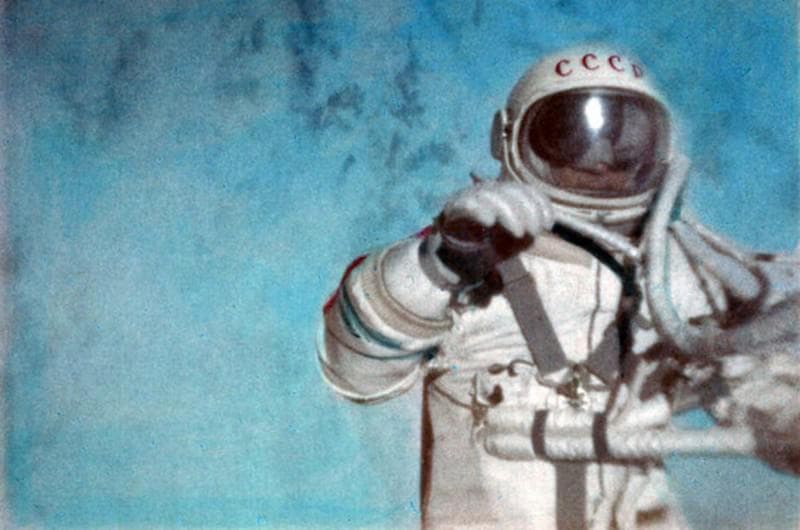
Of course, the first “space walk” was not without problems. The inflating of the spacesuit in vacuum turned out to be too strong, and Leonov had to partially relieve the internal pressure in order to be able to move. However, his movements were still limited, so he had to return to the airlock not with his feet forward (as prescribed by the flight task), but with his head. But in the end, a complex and dangerous operation ended safely.
In the future, the first Soyuz spacecraft used a Yastreb (Hawk) spacesuit to work in outer space, made taking into account the comments on the Berkut. Each suit was sewn individually for a specific cosmonaut. In the United States, a spacesuit developed by order of the Air Force and used in the X-15 missile aircraft program was taken as a base. Structurally, it did not differ much from the Soviet one — there was also a rubber sealed layer, a power layer made of special Link-net fabric, several layers of nylon and an outer layer made of Nomex fabric (meta aramid withstanding heating up to 400 °C).
The spacesuit for the Gemini program was released in three versions: for short flights, for spacewalking (G4C) and with a soft helmet for long missions without the ability to leave the spacecraft (G5C). Also, this spacesuit was used in the first flights under the Apollo program. Leonov’s Berkut and G4C became the basis for the creation of the following types of spacesuits for extravehicular activity (EVA, in English terminology).
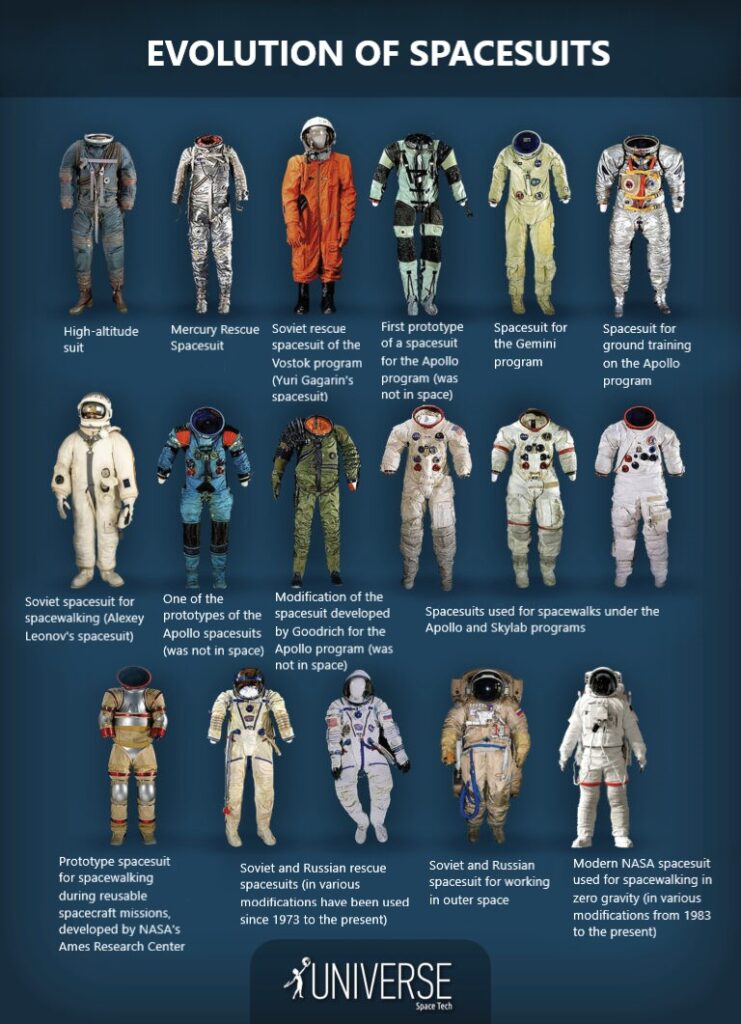
The experience gained by both countries has led to the fact that now the International Space Station (ISS) uses somewhat similar, but very different models for working “overboard” — the Russian Orlan and the American EMU. What these systems have in common is their versatility. Different people can work in the same spacesuit. But the technical solutions used in them differ markedly.
“Orlan” is a semi-rigid structure (rigid body, bending arms) with a door in the back. This element is borrowed from the lunar model “Krechet”, which will be discussed below. Since 1977, the spacesuit has been modernized, it is becoming more comfortable to be in it and it is possible to work for a long time.


The American EMU is also semi-rigid, but it is divided into more parts — the upper torso, lower, limbs, helmet, backpack. Disputes about whose spacesuit is better can go on for a long time and without much success — both models have their advantages and disadvantages.
Follow us on Twitter to get the most interesting space news in time
https://twitter.com/ust_magazine


